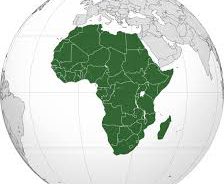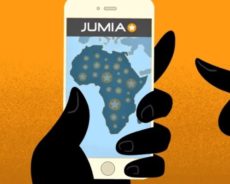In this interview, Chafic Traboulsi; Head, Networks; Ericsson, Middle East & Africa Gives Insight on the Importance of Regular Mobility Report on Live Networks across the Globe.

How did you arrive at the numbers released in the report?
The Ericsson figures for actual and net added subscriptions are based on several data sources including regulators and operators, as well as macroeconomic factors.
Ericsson performs forecasts on a regular basis to support internal planning as well as market communications. The subscription and traffic forecast baseline in this report is based on historical data from various sources, validated with Ericsson internal data, including extensive measurements in customer networks. Future development is estimated based on macroeconomic trends, user trends (including research by Ericsson ConsumerLab), market maturity, technology development expectations and documents such as industry analyst reports, on a national or regional level, together with internal assumptions and analysis. Updates to the subscription and traffic forecasts are announced regularly.
Ericsson regularly performs traffic measurements in over 100 live networks in all major regions of the world. Detailed measurements are made in a selected number of commercial WCDMA/HSPA and LTE networks with the purpose of analyzing various mobile traffic patterns. All subscriber data is made anonymous before it reaches Ericsson’s analysts.
Why is Ericsson doing these measurements?
Ericsson is constantly aiming for solutions and products with superior performance. Understanding the traffic volumes and patterns are crucial to improve product development as well as network dimensioning and optimization. In these measurements, Ericsson works together with operators as well as directly towards device manufacturers and application providers.
In 2023 there is still a gap between the number of smartphone subscriptions and mobile broadband subscriptions of around 1.2 billion subscriptions, what is the reason for this
A part (25%) of the gap is due to mobile PCs, tablets and mobile router subscriptions, but the majority are related to 3G/4G phones that do not fulfill the definition we have used for smartphones (i.e. having an open OS capable of downloading and running “apps”, like iPhones and Android OS phones). Many of these devices are probably still relatively “smart” and with good screen, but do not have an open OS etc. as defined.
Why do you expect US, South Korea, Japan and China to lead the uptake of 5G subscriptions?
All four major operators in the US have publicly announced that they will begin providing 5G services between late 2018 and mid-2019. It is likely that there will be a fast take up of 5G services in the country
In South Korea, a large-scale 5G trial network was used during the winter Olympic Games in February 2018. Operators in the country have announced their intention to launch commercial 5G services early. Japan have stated they will have 5G ready for the Tokyo 2020 Olympic and Paralympic. The Chinese government, meanwhile, has also pushed for the aggressive deployment of 5G technology. China is hosting the 2022 Winter Olympics in Beijing.
Mobile data traffic is expected to have grown by a factor of 8 by the end of 2023. How should we look at that in relation to expected mobile equipment market growth and Ericsson mobile equipment sales?
The development of the mobile equipment market is not solely a function of traffic volume growth. Other factors including coverage build-out, network efficiency, speed and quality requirements driven by new devices and applications, also play an important role.
How do you calculate when stating that 20 percent of mobile data traffic will be carried by 5G networks in 2023?
The traffic carried over 5G networks is the traffic actually using the 5G Radio Access network (RAN) – subscribers with 5G subscriptions will in addition to this also generate traffic that use the 4G (LTE) network (or 3G) when in areas where 5G coverage is not yet established.
Could you share the data for regions/countries not displayed in the report?
We don’t share data on country level (with a few exceptions of large countries, such as China). One reason is that the uncertainty of forecasts reaching to 2023 increases when drilling down to country leve (l. More detailed data behind some of the graphs is available via the Ericsson Traffic Exploration tool.
What is the relation between VoLTE and Wi-Fi calling?
Both VoLTE and Wi-Fi calling rely on an IP Multimedia Subsystem (IMS) network to deliver the voice services, and other communication services like video calling. Operators that have launched VoLTE over their LTE network (the telephony service is delivered via the IMS network), could extend the same voice service (same SIM card) into buildings using Wi-Fi where there is poor LTE coverage. Operators that have not yet launched VoLTE, could also start to offer Wi-Fi calling services in users’ homes over their own Wi-Fi access point, if the users have bad 2G/3G coverage in their homes. When operators later deploy VoLTE, the voice service can work seamlessly between LTE and Wi-Fi access, which means that when users leave their house while being on a phone call over Wi-Fi the voice call will continue automatically over LTE when the signal becomes too weak.
VoLTE uses network mechanisms to make the service predictable and independent of load from other mobile data services, while for Wi-Fi calling, the service quality will be dependent on the local radio environment and load from other users connected to the same Wi-Fi access point. Thus, Wi-Fi calling is recommended for residential usage and smaller enterprises, while larger enterprises are recommended to use 3GPP-based small cell solutions to guarantee high-quality real-time voice and video calling services.
How will VoLTE work in 5G networks?
3GPP standardization for 5G is ongoing and the aim is that IMS/VoLTE will also be used as the service engine to enable voice and communication services over 5G access. This means that operator voice services will be carried over 5G access and delivered via IMS. There will be different phases in the network and device evolution when it comes to offering voice services over standalone and non-standalone 5G access.
Ericsson is exploring new use cases and business ideas on how communication services could be used and improved when 5G access is deployed, i.e. using the higher capacity and lower latency in 5G networks. It could for example be use cases combining voice with augmented reality, different types of IoT use cases, and other services relevant for industries and enterprises.
What do you categorize as IoT?
Typical examples are connected cars, remote metering (e.g. utility meters), Point-of-Sale terminals, Security systems, Tele-health devices, smart TVs as well as other connected consumer electronics.
How many of the forecast IoT devices will have cellular connectivity in 2023
We estimate 3.5 billion cellular IoT connections, which is around 85% of the wide-area category. There is a considerable upside potential considering ongoing deployments of massive IoT networks, driven by China.
The market size (value) of use cases/applications that utilize cellular IoT How many connected cars will there be in 2023?
Our forecast does not currently publish details on each sub-segment. Worldwide there are around 80 million new cars sold every year. If 50% of those are connected from now until 2023, this would mean a few hundred million more connected cars compared to today.








